Japanese Car Spotters Guide - 1979 |
|
|
 |
|
|
|
|
Technical progress in 1979 could be summed up as the world-wide spread of front wheel drive. It certainly opened the door to a new decade awaiting an energy revolution and acceleration of evolution. General Motors' exciting 'Xick Skylark, Chevrolet Citation, Oldsmobile Omega, and Pontiac Phoenix were front-drive models (with transverse engines) which typified US 'down-sizing', and the (expensive) quest for dramatically reduced fuel consumption in line with tough legislation.
The launch of the cars, one of the US automotive industry's most important and significant events for thirty years, underlined world acceptance of front wheel drive, popularised by Andre Citroen in 1934. GM, through its German subsidiary Opel, also changed to front drive with the high volume Kadett models. The same observations applyed to Toyota and its Tercel model, the Japanese being forced to produce technically advanced cars in an attempt to win the arms race that was being fought in Europe by the world's manufacturers. |
 |
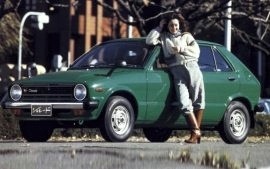 |
|
 |
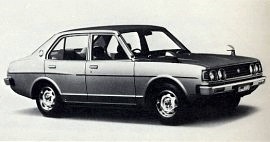 |
|
 |
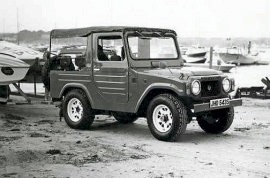 |
|
 |
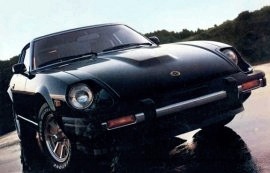 |
|
 |
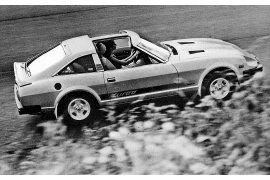 |
 |
Datsun 280 ZX Turbo |
| |
Also see: Datsun Car Reviews |
| |
In 1979 Datsun had the distinction of having put into production the first turbocharged Japanese car. Understandably Datsun chose their most sporting model, the 280 coupe, for the treatment, the familiar 2753 cc ohc in-line six-cylinder engine having its compression ratio lowered from 8.3:1 to 7.4:1 to cope with the pressures of the Airesearch turbo. With Japanese-made Bosch L-Jetronic injection the blown engine had a maximum power-output of 200 bhp DIN (149 kW). 38 per cent more than the unsupercharged motor, and maximum torque reached the impressive figure of 231.36 Ib ft (32 mkg/31 0.25 Nm). The 2 + 2 coupe was well-equipped, and had a maximum speed of 143 mph (230 km/h) according to the manufacturers. The sun-roof was unusual in that it consisted of two halves of smoked glass fitted each side of the roll-bar, the arrangement being dubbed the 'T-bar-roof'. |
|
 |
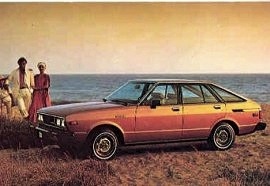 |
|
 |
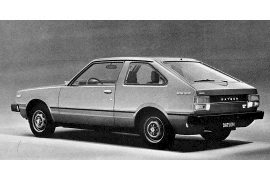 |
 |
Datsun Cherry |
| |
Also see: Datsun Car Reviews |
| |
First appearing in 1970, the original Datsun Cherry weighed 1477 Ib (670 kg), was 11.84 ft (3.61 metres) long, and was one of the first Japanese front-drive cars. Over the years the Cherry ripened in size and weight, so much so that the third generation model, released in 1979, weighed 1885-1940 Ib (855-880 kg) in running order, and was 12.76 ft (3.89 metres) long. The Nissan Group, manufacturers of Datsun cars, adhered to much the same technical layout for the third generation Cherry (McPherson strut front suspension, independent trailing arm at rear, rack and pinion steering, servo-assisted disc/drum brakes), but had devised a larger floorpan to be supported by the identical wheelbase of the earlier model (7.85 ft/2.395 metres). Tracks were widened by 4.13 in (10.5 cm) at front, and 3.14 in (8 cm) at rear. Accordingly it was thus possible to clothe the car with up-to-the-minute bodywork in the European style. Occupant space rivaled the best of the opposition but the boot was still small by 1979 standards. The Cherry, known as the Pulsar in Japan, was manuufactured as two and four-door saloon, three-door coupe, and there was a station wagon with choice of three or five doors. All models came with a diversity of equipment and transmission packages (including four or five-speed gearboxes, and in some markets, a semi-automatic two-speed unit). In contrast the engine had changed little over the years, the same transverse 990 cc pushrod ohv unit persisting with maximum power output of 45 bhp DIN (33.55 kW). There was also a 1171 cc derivative with output of 52 bhp DIN (38.77 kW). Respective top speeds were 87 mph (140 km/h) and 90 mph (145 km/h). In Japan there was also a 1400 cc injected model. |
|
 |
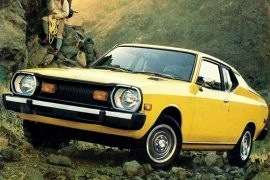 |
|
 |
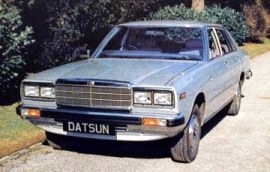 |
|
 |
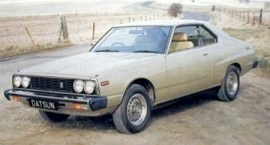 |
|
 |
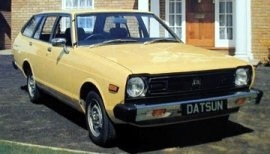 |
|
 |
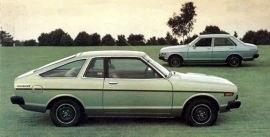 |
|
 |
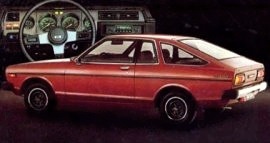 |
|
 |
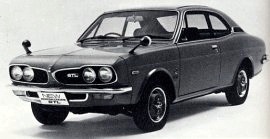 |
|
 |
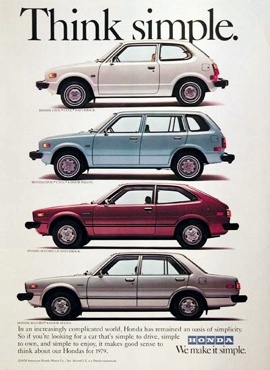 |
 |
Honda Accord |
| |
Also see: Honda Car Reviews |
| |
The famous Japanese car/motorcycle manufacturer supplemented its economy range (Civic 1200-1500) and its medium line (Accord 1600-1800) with a new three-door model virtually the size of the Accord. The good-Iooking Prelude was 13.41 ft (4.09 metres) long, just a little shorter than the Accord at 3.51 ft (4.12 metres). The Prelude was a 'three-box' car with luggage boot, whereas the Accord was a 'two-box' with hatchback and folding rear seat. Although the two models shared a similar mechanical layout, the Prelude was an entirely new car with modified suspension (notably at the rear) and slightly shorter wheelbase (7.61 ft/2.32 metres compared to 7.80 ft/2.38 metres). |
|
 |
 |
 |
Honda Accord 3-door Hatchback |
| |
Also see: Honda Car Reviews |
| |
The Honda Accords suspension layout remained all-independent but with torsion bars and a combination of fore-and-aft and transverse arms. The European market received a reconstituted version of the four-cylinder ohc engine, the 77 mm bore and 86 mm stroke giving a cubic capacity of 1602 cc. Compression ratio was 8.4: 1 (instead of 8: 1 ), there was electronic-ignition, and although maximum power output remained at 80 bhp (60.56 kW), torque was improved to 94.171b ft (12.9 mkg/126.28 Nm) at 500 rpm. |
|
 |
 |
 |
Honda Accord 4-Door |
| |
Also see: Honda Car Reviews |
| |
The Honda Accords transmission remained unchanged, the choice being between the slick and light-to-operate five-speed manual, and the semi-automatic two-speed. Smaller than the Accord, yet a little heavier, the Prelude had rather less interior space, particularly in the rear seats. It was a well proportioned car, however, and had some notable novelties: a neat facia with concentric tacho and speedometer as well as integrated radio. The electric sun-roof too was unusual in that it incorporated filter-glass covered by an opaque sliding panel. |
|
 |
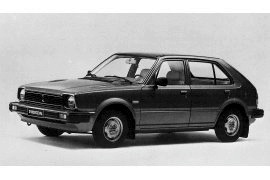 |
 |
Honda Civic |
| |
Also see: Honda Car Reviews |
| |
Initially launched seven years earlier, Honda's well named 'Civic' was one of Japan's first in the modern idiom with transverse engine and front wheel drive. Little modified over the years was proof of the excellence of the car - the Civic proved a favorite with city dwellers, the Honda two-speed semi-automatic transmission (Hondamatic) option suiting many for its ease of operation. The 1980 models gained weight 1653 Ib/750 kg - 1730 Ib/785 kg), growing dimensionally with the length increasing 7.87 in (20 cm) to 12.33 ft (3.76 metres) for the three-door model, and 12.56 ft for the five-door. With the modifications came a Prelude-type grille, and a hatchback with no frustrating body lip when raised. The hatchback could be raised from the driver's seat. |
|
 |
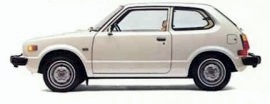 |
 |
Honda Civic Hatchback |
| |
Also see: Honda Car Reviews |
| |
The 1979 Civic also adopted the Prelude's rear suspension, and incorporated interior improvents which included remodelled seats, and a dashboard which featured an integrated radio. The new 1335 cc engine had a longer stroke (increased from 76 to 82 mm), and, with electronic ignition, developed 60 bhp DIN (45.42 kW), as well as having the improved maximum torque figure of 69.40 Ib ft 9.6 mkg/93.07 Nm). The new Civic also had 13 inch wheels. |
|
 |
 |
|
 |
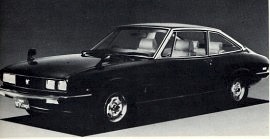 |
|
 |
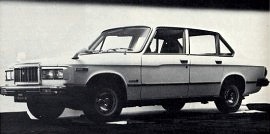 |
|
 |
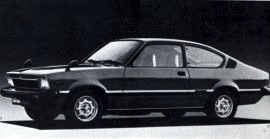 |
|
 |
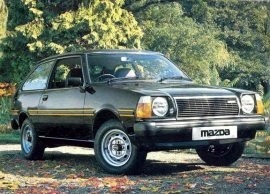 |
|
 |
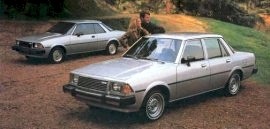 |
 |
|
| |
Also see: Mazda Car Reviews |
| |
The Mazda 626 series 1 proved to be a durable and
reliable car, and was influential in developing Mazda's
enviable reputation for quality. Its greatest strength was unquestionably the body,
strong and well built setting a standard rarely matched
at this price point. It is unfortunate then that the
internal plastics did not prove quite as enduring, many
fading, cracking and disintergrating quickly under the
Australian sun. Handling was never a strong point, with the series one
using a coil-sprung live rear axle - this setup thankfully
being replaced by fully independant suspension on subsequent
models. Many lamented the passing of this model in 1983 as the
last of the rear-wheel drive 626's to be manufactured.
The subsequent front wheel drive model went on to win
the "Car of the Year" title in 1984. Rarely seen on the roads today, the series one can best
be remembered for setting the benchmark in affordable
quality at the mid-sized family car market. |
|
 |
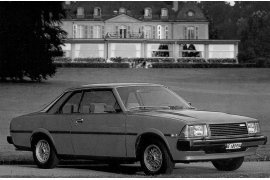 |
 |
|
| |
Also see: Mazda Car Reviews |
| |
Marketed in its native Japan as the Capella, in most export markets as the 626, and in the UK as the Montrose, Toyo-Kogyo's European-style medium saloon and coupe range adhered to the 'classic' layout of front engine driving rear wheels through a live axle. The 626 replaced the medium 616 range, but followed much the same lines although the wheelbase was extended by some 3.93 in (10 cm) to 8.23 ft (2.51 metres). The independent front suspension was by McPherson coil-struts, trailing arms and anti-roll bar, while the live rear axle was also coil-sprung and positively located by four trailing arms and a Panhard rod. |
|
 |
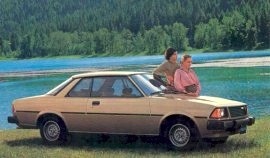 |
 |
|
| |
Also see: Mazda Car Reviews |
| |
The Mazda 626's rear suspension also incorporated an anti-roll bar. Steering was by a low-geared recirculating-ball installation and was not noted for its precision. Engines ranged from the basic 1586 cc (75 bhp DIN/56 kW) unit to the top model 1970 cc (90 bhp DIN/67 kW) motor which also powered the Cosmo and Luce models. All engines had four cylinders, overhead camshafts, and inclined valves. Equipment levles were very comprehensive. Four-door sedans had a variety of engine, trim and transmission options, and there was also a sporty two-door coupe (14.10 ft/4.3 metres long) which came as standard with five-speed gearbox and two-liter engine in most markets. |
|
 |
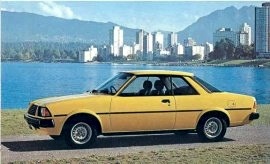 |
|
 |
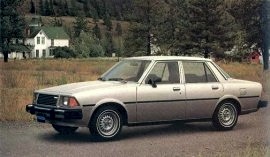 |
|
 |
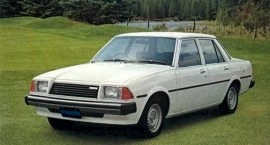 |
|
 |
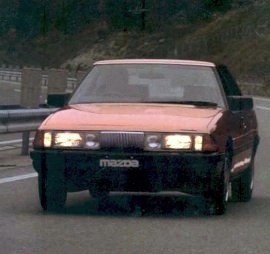 |
|
 |
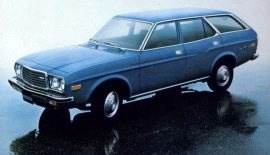 |
|
 |
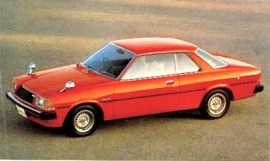 |
|
 |
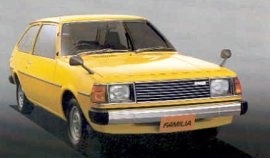 |
|
 |
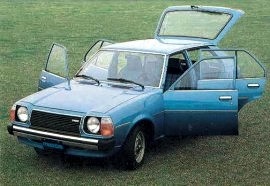 |
|
 |
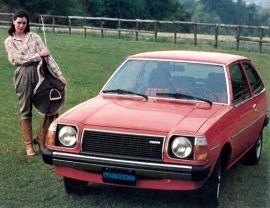 |
|
 |
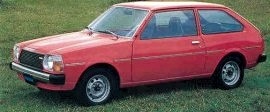 |
|
 |
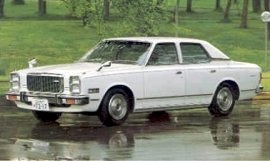 |
|
 |
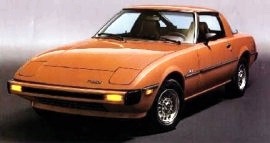 |
|
 |
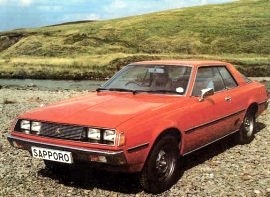 |
|
 |
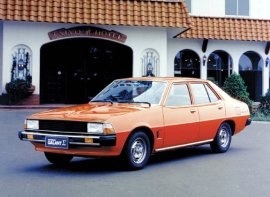 |
|
 |
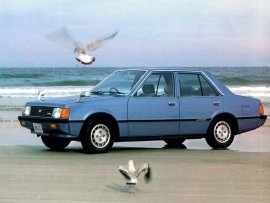 |
|
 |
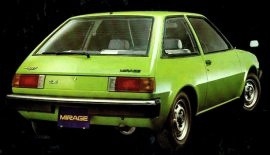 |
|
 |
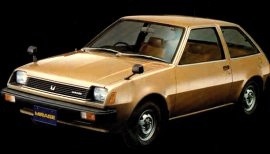 |
|
 |
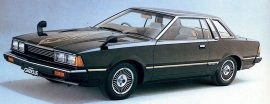 |
|
 |
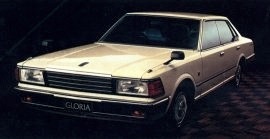 |
|
 |
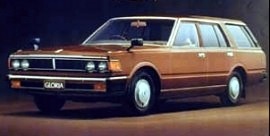 |
|
 |
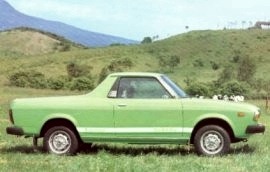 |
|
 |
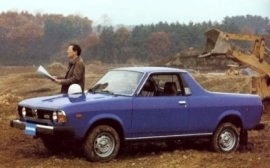 |
|
 |
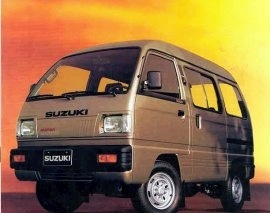 |
|
 |
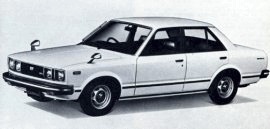 |
|
 |
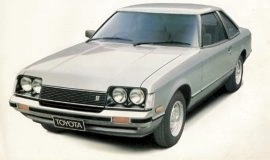 |
|
 |
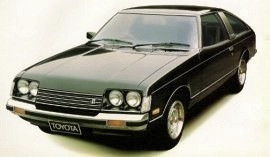 |
|
 |
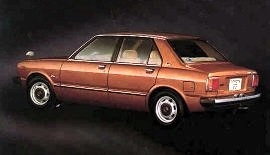 |
|
 |
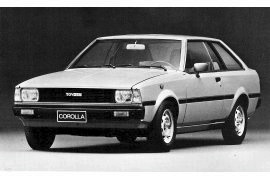 |
 |
Toyota Corolla |
| |
Also see: Toyota Car Reviews |
| |
For the three years 1974-77 Toyota's Corolla was the world's most widely sold car, and in spite of a very conventional design (or perhaps because of it) more than seven million units were produced. The 1979 model Corolla was a 'reskinned' model with all new, more modern European-style bodywork on a chassis with both lengthened wheelbase and widened track. Toyota, by 1979 well established as Japan's No. 1 manufacturer, had also dropped semi-elliptic leaf rear springs in favour of coils, but a live rear axle was still employed. The more spacious bodywork had also grown larger (overall length 13.28 ft/4.05 metres ∆13.45 ft/4.1 0 metres), and was available in two or four-door saloon form, as well as station wagon, and a 'Liftback' variation - a fastback that bore more than a passing resemblance to the Alfa- Romeo Giulietta Coupe. No fundamental changes in the engine department, the 1300 cc 60 bhp/45 kW unit staying in production as well as three versions of the 1600 motor, with power-outputs of 75 bhp (56 kW). 86 bhp (64 kW) and 108 bhp (81 kW). Nearing the end of 1979 daily production had been more than 3000 units - staggering. |
|
 |
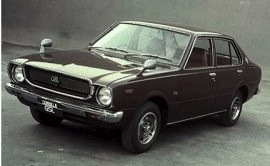 |
|
 |
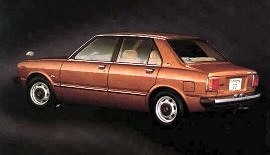 |
|
 |
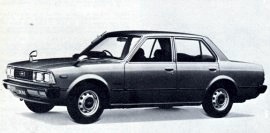 |
|
 |
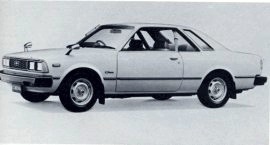 |
|
 |
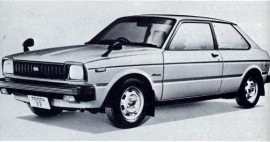 |
|
 |
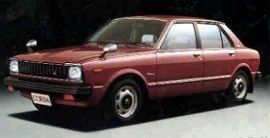 |
|
 |
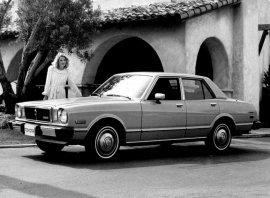 |
|
 |
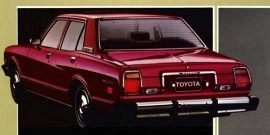 |
|
 |
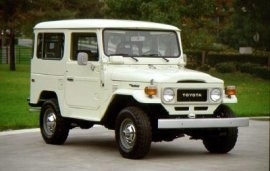 |
|
 |
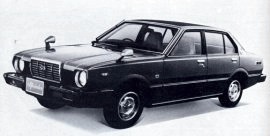 |
|
 |
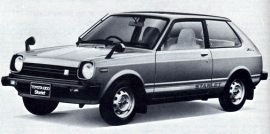 |
|
 |
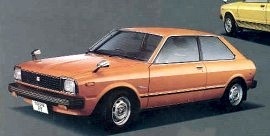 |
|
 |
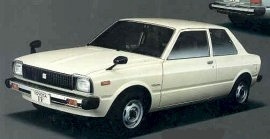 |
|
 |
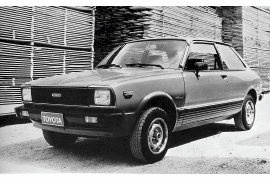 |
 |
Toyota Tercel |
| |
Also see: Toyota Car Reviews |
| |
Toyota of Japan was, by 1979, the world's third-largest motor manufacturer, however it was coming under increased criticism for its dated designs. Their move into the front-drive field after similar moves by Honda, Datsun, Mitsubishi, and Daihatsu went some way to silencing the critics. Toyota's front wheel drive models were of the medium-size type (1300/1450 cc and around 13 ft/4.0 metres long), and were marketed under the Corsa label in Japan, and Tercel elsewhere. The Tercel was all-independently-sprung, and came with choice of two or four doors. The engine was entirely new, a light-alloy four cylinder with belt-driven overhead camshaft operating parallel valves, and in spite of five crankshaft bearings was relatively short. The Japanese market got a 1453 cc version (bore and stroke dimensions 76 by 77 mm), but for export there was a 1296 cc (76 by 71 mm) motor with a maximum power output of 60 bhp DIN (44.74 kW), with max. torque of 72.3 Ib ft (10 mkg) at 3000 rpm. The engine was slightly inclined and was installed longitudinally ahead of the front suspension, but it differed from the basically similar layout of the Audi in that the gearbox (a five-speed unit for export) was beneath the engine, slotted into the oil sump below third and fourth cylinders. The scheme certainly reduced bulk but raised the centre of gravity. The Tercel was fitted with rack and pinion steering, 'medium-geared', and disc/drum brakes. The 1300 was good for 93 mph (150 km/h), and although the lines lacked originality, the handling and roadholding matched the best of the European front-drive cars. Comfort was somewhat lacking however. |
|
|
